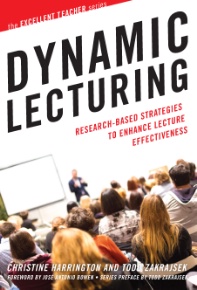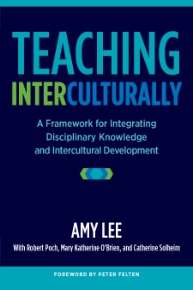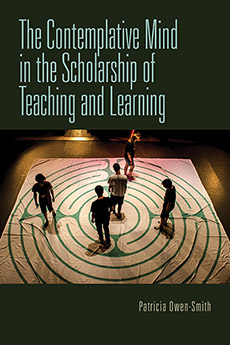
3 Selected Items
Select an item by clicking its checkbox

Dynamic Lecturing: Research-Based Strategies to Enhance Lecture Effectiveness
Additional Info:
Click Here for Book Review
Is the lecture an outmoded teaching method that inhibits active learning or is it a potentially powerful tool that is an essential part of every teacher’s repertoire?
This book presents up-to-date research on the different types of lecture, on what constitutes effective lecturing, and on the impact of lecturing ...
Click Here for Book Review
Is the lecture an outmoded teaching method that inhibits active learning or is it a potentially powerful tool that is an essential part of every teacher’s repertoire?
This book presents up-to-date research on the different types of lecture, on what constitutes effective lecturing, and on the impact of lecturing ...
Additional Info:
Click Here for Book Review
Is the lecture an outmoded teaching method that inhibits active learning or is it a potentially powerful tool that is an essential part of every teacher’s repertoire?
This book presents up-to-date research on the different types of lecture, on what constitutes effective lecturing, and on the impact of lecturing when done appropriately and well. It fills the void in professional development resources on how to lecture, validating the practice when it’s aligned with the educational mission of creating engaged learning environments.
Christine Harrington and Todd Zakrajsek demonstrate that, rather than lecture and active learning being mutually exclusive or either-or propositions, the effectiveness of the former can be greatly enhanced when combined with active learning techniques through what they define as dynamic lecturing; and provide context about the need to balance these approaches to meet the needs of students as they progress from novice to advanced learners.
They present a range of strategies that enhance student learning during lectures. They open each chapter with the evidence behind each lecturing strategy they describe, and conclude with practical suggestions for quick application in the classroom. They offer readers the lecture planning and evaluation tools for reworking their lectures in ways that provide high-level engagement and achievement for their students.
The opening section of the book explores the benefits of lecturing and describes the different modalities of lecture, with an assessment of the advantages and disadvantages of each. The second section focuses on educational strategies to enhance the lecture, including, among others, activating prior knowledge, emphasizing important points, effectively using multi-media, making concepts meaningful via examples, and the importance of retrieval practice. Each covers the underlying theory and research, and advice on how to align the engagement techniques with instructional goals. The book concludes with guidance on effective planning for lecturing and helping chairs, administrators, or peers engage in effective evaluation of the lecture.
This is a dynamic resource for all faculty interested in revitalizing their teaching. The strategies are succinct, easy to incorporate into lectures and, done well, will have immediate impact and increase student mastery of course content. (From the Publisher)
Table Of Content:
Foreword - José Antonio Bowen
Acknowledgments
Series Preface
Introduction
Part One: Exploring the Lecture
Ch 1. The Lecture as a Teaching Strategy
Ch 2. Types of Lectures
Part Two: Enhancing Lectures
Ch 3. Activating Prior Knowledge
Ch 4. Capturing Attention and Emphasizing Important Points
Ch 5. Effectively Using Multimedia and Technology
Ch 6. Making it Meaningful Through Examples
Ch 7. Reflection Opportunities
Ch 8. Retrieval Practice
Ch 9. Questions for Critical Thinking
Part Three: Planning and Evaluating Lectures
Ch 10. Planning Effective Lectures
Ch 11. Evaluating Lectures
Authors
Index
Click Here for Book Review
Is the lecture an outmoded teaching method that inhibits active learning or is it a potentially powerful tool that is an essential part of every teacher’s repertoire?
This book presents up-to-date research on the different types of lecture, on what constitutes effective lecturing, and on the impact of lecturing when done appropriately and well. It fills the void in professional development resources on how to lecture, validating the practice when it’s aligned with the educational mission of creating engaged learning environments.
Christine Harrington and Todd Zakrajsek demonstrate that, rather than lecture and active learning being mutually exclusive or either-or propositions, the effectiveness of the former can be greatly enhanced when combined with active learning techniques through what they define as dynamic lecturing; and provide context about the need to balance these approaches to meet the needs of students as they progress from novice to advanced learners.
They present a range of strategies that enhance student learning during lectures. They open each chapter with the evidence behind each lecturing strategy they describe, and conclude with practical suggestions for quick application in the classroom. They offer readers the lecture planning and evaluation tools for reworking their lectures in ways that provide high-level engagement and achievement for their students.
The opening section of the book explores the benefits of lecturing and describes the different modalities of lecture, with an assessment of the advantages and disadvantages of each. The second section focuses on educational strategies to enhance the lecture, including, among others, activating prior knowledge, emphasizing important points, effectively using multi-media, making concepts meaningful via examples, and the importance of retrieval practice. Each covers the underlying theory and research, and advice on how to align the engagement techniques with instructional goals. The book concludes with guidance on effective planning for lecturing and helping chairs, administrators, or peers engage in effective evaluation of the lecture.
This is a dynamic resource for all faculty interested in revitalizing their teaching. The strategies are succinct, easy to incorporate into lectures and, done well, will have immediate impact and increase student mastery of course content. (From the Publisher)
Table Of Content:
Foreword - José Antonio Bowen
Acknowledgments
Series Preface
Introduction
Part One: Exploring the Lecture
Ch 1. The Lecture as a Teaching Strategy
Ch 2. Types of Lectures
Part Two: Enhancing Lectures
Ch 3. Activating Prior Knowledge
Ch 4. Capturing Attention and Emphasizing Important Points
Ch 5. Effectively Using Multimedia and Technology
Ch 6. Making it Meaningful Through Examples
Ch 7. Reflection Opportunities
Ch 8. Retrieval Practice
Ch 9. Questions for Critical Thinking
Part Three: Planning and Evaluating Lectures
Ch 10. Planning Effective Lectures
Ch 11. Evaluating Lectures
Authors
Index

Teaching Interculturally: A Framework for Integrating Disciplinary Knowledge and Intercultural Development
Additional Info:
Click Here for Book Review
How can I simultaneously support students' critical engagement with course content and develop their intercultural awareness?
Most faculty have multiple diversities present in any given classroom or academic program— whether from an influx of international students or an increase of students from low-income, first generation, and/or racial/ethnic minority ...
Click Here for Book Review
How can I simultaneously support students' critical engagement with course content and develop their intercultural awareness?
Most faculty have multiple diversities present in any given classroom or academic program— whether from an influx of international students or an increase of students from low-income, first generation, and/or racial/ethnic minority ...
Additional Info:
Click Here for Book Review
How can I simultaneously support students' critical engagement with course content and develop their intercultural awareness?
Most faculty have multiple diversities present in any given classroom or academic program— whether from an influx of international students or an increase of students from low-income, first generation, and/or racial/ethnic minority populations— and are concerned about how to maintain a rigorous curriculum and ensure that all their students succeed, given disparate backgrounds and varying degrees of prior knowledge.
This book provides faculty and instructors with a theoretical foundation, practical tools, and an iterative and reflective process for designing and implementing an intercultural pedagogy. The authors bring to bear the expertise of their various disciplinary backgrounds to offer a responsive, integrative framework to develop and continually refine a pedagogy that both promotes deep disciplinary learning and supports intercultural outcomes for all students.
The authors offer a framework that is flexible enough to be responsive to the experience, environment, and particulars of a given teaching and learning situation. The text incorporates narrative text by the authors, as well as first-person reflections, classroom activities, and annotated assignments that illustrate the dynamic process of intention, experiment/implement, critique, and refinement that characterize pedagogy and intercultural interaction.
The authors bring to bear the expertise of their various disciplinary backgrounds, a deep knowledge of effective pedagogical practice, and their experience and grounding in intercultural practice: Amy in composition/writing studies, Mary Katherine in international education with rich experience as a faculty development trainer, and Bob and Catherine, respectively, an historian and a family scientist.
This book is intended both for individual reading as well as for collective study in learning communities.
Table Of Content:
Foreword—Peter Felten
Acknowledgements
Part I: Intercultural Pedagogy: Framework and Praxis
Ch 1. For an Intercultural Pedagogy
Ch 2. Unlearning Teaching: A Framework for Intercultural Pedagogy
Ch 3. Learning to Teach Interculturally
Part II: From Theory to Action
Ch 4. Case Study—Bob
Ch 5. Case Study—Catherine
Ch 6. Facilitating Productive Discomfort in Intercultural Classrooms
References
Contributors
Index
Click Here for Book Review
How can I simultaneously support students' critical engagement with course content and develop their intercultural awareness?
Most faculty have multiple diversities present in any given classroom or academic program— whether from an influx of international students or an increase of students from low-income, first generation, and/or racial/ethnic minority populations— and are concerned about how to maintain a rigorous curriculum and ensure that all their students succeed, given disparate backgrounds and varying degrees of prior knowledge.
This book provides faculty and instructors with a theoretical foundation, practical tools, and an iterative and reflective process for designing and implementing an intercultural pedagogy. The authors bring to bear the expertise of their various disciplinary backgrounds to offer a responsive, integrative framework to develop and continually refine a pedagogy that both promotes deep disciplinary learning and supports intercultural outcomes for all students.
The authors offer a framework that is flexible enough to be responsive to the experience, environment, and particulars of a given teaching and learning situation. The text incorporates narrative text by the authors, as well as first-person reflections, classroom activities, and annotated assignments that illustrate the dynamic process of intention, experiment/implement, critique, and refinement that characterize pedagogy and intercultural interaction.
The authors bring to bear the expertise of their various disciplinary backgrounds, a deep knowledge of effective pedagogical practice, and their experience and grounding in intercultural practice: Amy in composition/writing studies, Mary Katherine in international education with rich experience as a faculty development trainer, and Bob and Catherine, respectively, an historian and a family scientist.
This book is intended both for individual reading as well as for collective study in learning communities.
Table Of Content:
Foreword—Peter Felten
Acknowledgements
Part I: Intercultural Pedagogy: Framework and Praxis
Ch 1. For an Intercultural Pedagogy
Ch 2. Unlearning Teaching: A Framework for Intercultural Pedagogy
Ch 3. Learning to Teach Interculturally
Part II: From Theory to Action
Ch 4. Case Study—Bob
Ch 5. Case Study—Catherine
Ch 6. Facilitating Productive Discomfort in Intercultural Classrooms
References
Contributors
Index

The Contemplative Mind in the Scholarship of Teaching and Learning
Additional Info:
In The Contemplative Mind in the Scholarship of Teaching and Learning, Patricia Owen-Smith considers how contemplative practices may find a place in higher education. By creating a bridge between contemplative practices and the Scholarship of Teaching and Learning (SoTL), Owen-Smith brings awareness of contemplative pedagogy to a larger audience of college instructors, while also offering classroom models and outlining the ongoing challenges of both defining these practices and assessing their ...
In The Contemplative Mind in the Scholarship of Teaching and Learning, Patricia Owen-Smith considers how contemplative practices may find a place in higher education. By creating a bridge between contemplative practices and the Scholarship of Teaching and Learning (SoTL), Owen-Smith brings awareness of contemplative pedagogy to a larger audience of college instructors, while also offering classroom models and outlining the ongoing challenges of both defining these practices and assessing their ...
Additional Info:
In The Contemplative Mind in the Scholarship of Teaching and Learning, Patricia Owen-Smith considers how contemplative practices may find a place in higher education. By creating a bridge between contemplative practices and the Scholarship of Teaching and Learning (SoTL), Owen-Smith brings awareness of contemplative pedagogy to a larger audience of college instructors, while also offering classroom models and outlining the ongoing challenges of both defining these practices and assessing their impact in education. Ultimately, Owen-Smith asserts that such practices have the potential to deepen a student’s development and understanding of the self as a learner, knower, and citizen of the world.
Table Of Content:
Acknowledgments
Introduction
Ch 1. A Historical Review
Ch 2. Contemplative Practices in Higher Education
Ch 3. Challenges and Replies to Contemplative Methods
Ch 4. Contemplative Research
Ch 5. The Contemplative Mind: A Vision of Higher Education for the 21st Century
Coda
References
Index
In The Contemplative Mind in the Scholarship of Teaching and Learning, Patricia Owen-Smith considers how contemplative practices may find a place in higher education. By creating a bridge between contemplative practices and the Scholarship of Teaching and Learning (SoTL), Owen-Smith brings awareness of contemplative pedagogy to a larger audience of college instructors, while also offering classroom models and outlining the ongoing challenges of both defining these practices and assessing their impact in education. Ultimately, Owen-Smith asserts that such practices have the potential to deepen a student’s development and understanding of the self as a learner, knower, and citizen of the world.
Table Of Content:
Acknowledgments
Introduction
Ch 1. A Historical Review
Ch 2. Contemplative Practices in Higher Education
Ch 3. Challenges and Replies to Contemplative Methods
Ch 4. Contemplative Research
Ch 5. The Contemplative Mind: A Vision of Higher Education for the 21st Century
Coda
References
Index